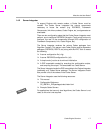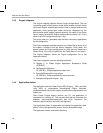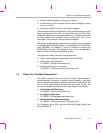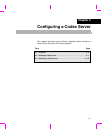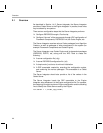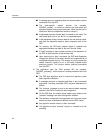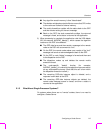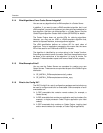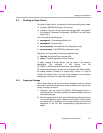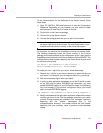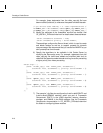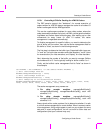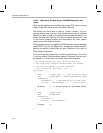
Overview
Configuring a Codec Server 2-5
■ Any algorithm scratch memory is then "deactivated".
■ The skeleton writebacks output buffers to ensure that CPU writes
to the cache are flushed to external memory.
■ The node's thread then replies with the status back to the GPP
and then blocks waiting for the next message.
■ Back on the GPP, the stub unmarshalls outArgs, the returned
message is freed, and a status is returned to the application
3) When processing is complete, the application calls the VISA delete
API (for example, AUDENC_delete() ), which causes the algorithm
instance on the DSP to be deleted:
■ The GPP-side forms and then sends a message to the remote
node on the DSP with a command to "exit".
■ On the DSP, the remote node wakes upon receipt of the "exit"
message and sends an acknowledgement back to the GPP.
■ On the GPP, a node "delete" message is formed and then sent
to the dispatcher on the DSP.
■ The dispatcher wakes up and deletes the remote node's
execution thread.
■ The node-specific "delete" function (for example,
AUDENC_delete() ) is invoked to free algorithm resources and to
do any node-specific cleanup. (Note that this call is from within
the dispatcher execution context.)
■ The remaining DSP-side instance object is deleted, and a
response is sent back to the GPP.
■ The remaining GPP-side instance objects are deleted, the
remote node message queue is closed, and then a status is
returned to the application.
2.1.3 What About Single-Processor Systems?
On systems where there are no "remote" codecs, there is no need to
configure a Codec Server.



